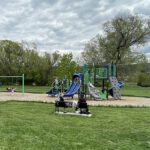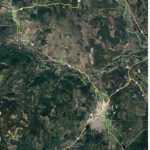Home »

B.C.’s COVID-19 response and latest updates for Sept. 17
Adrian Dix, Minister of Health, and Dr. Bonnie Henry, B.C.’s provincial health officer, today (Sept. 17) issued the following joint statement regarding updates on the novel coronavirus (COVID-19) response in British Columbia.

Today, we are announcing 165 new cases, including two epi-linked cases, for a total of 7,663 cases in British Columbia.
There are 1,705 active cases of COVID-19 in the province, 2,949 people who are under active public health monitoring as a result of identified exposure to known cases, and 5,719 people who tested positive have recovered.
Currently, 57 individuals are hospitalized with COVID-19, 22 of whom are in intensive care. The remaining people with COVID-19 are recovering at home in self-isolation.
Since the start of the pandemic, there have been 2,714 cases of COVID-19 in the Vancouver Coastal Health region, 3,937 in the Fraser Health region, 196 in the Island Health region, 489 in the Interior Health region, 241 in the Northern Health region and 86 cases of people who reside outside of Canada.
There has been one new COVID-19 related death, for a total of 220 deaths in British Columbia. We offer our condolences to everyone who has lost their loved ones during the COVID-19 pandemic.
There are two new health-care facility outbreaks, one at Delta Hospital and one at Peace Arch Hospital, both in the Fraser Health region. In total, 11 long-term care or assisted-living facilities and five acute-care facilities have active outbreaks.
There has been one new health-care facility outbreak at Delta Hospital in the Fraser Health region. In total, 11 long-term care or assisted-living facilities and four acute-care facilities have active outbreaks.
There have been no new community outbreaks, although there continue to be community exposure events.
Alerts are posted on the BC Centre for Disease Control’s (BCCDC) website, as well as on health authorities’ websites, providing details on where the potential exposure occurred and what actions to take – whether you need to self-isolate or monitor for symptoms.
For schools, public health teams will contact individuals through contact tracing, and schools will continue to issue alerts when a school exposure has occurred and action is required. Supporting these protocols, the BCCDC website and health authorities are also publishing notifications.
COVID-19 requires compromise and give and take. Today, our focus is to have as much as possible open and functioning in our communities – our essential services, workplaces and schools – while limiting our exposure to higher-risk activities and locations.
This give and take is a sacrifice for all of us, but is one that will keep us safe in the weeks and months ahead.
Containing the spread of the virus in our communities is core to our COVID-19 response and that is why getting tested as soon as you have symptoms is so important.
Today, a new made-in-B.C. sample collection program has been launched for all K-12 students across the province. One of the first of its kind worldwide.
For school-aged children four to 19, a mouth-rinse gargle is now available at COVID-19 collection centres around the province. Unlike the nasopharyngeal swab method, this new saline method doesn’t require a health-care professional to collect the sample.
Taking the step to get tested is how you protect your friends and loved ones, and for K-12 students there is now an easier alternative.
Not only is the new method more comfortable for younger people, a B.C. company will provide the collection tube, reducing the province’s dependency on the global supply chain for this sample method.
As well, the restriction on gatherings to no more than 50 people is another protection layer to contain the spread. It is important to remember that 50 people is an upper limit that needs to be scaled down based on the space you are in.
As we have seen, many businesses are only be able to safely accommodate just a few people, and the same applies for our homes – inside or out. Regardless of our location, when socializing with others, smaller is always safer.
The compromise to keep ourselves and our loved ones safe also includes seeing fewer friends and family members, for now.
Our small groups need to be the same small groups. Spending time with different friends on different days significantly increases our personal risk and is a continued source of transmission in our province.

So, when planning our activities, whether is a play date for your kids, or a weekend dinner party, ask yourself if the people are part of your ‘safe six’?
The restrictions and precautions are not forever, but they are needed right now. By stepping back now, we can protect those who are most vulnerable and keep the people we care about safe.
Let’s continue to make to September the month to get ready for the respiratory season, to hold steady with our layers of protection and step back from our social interactions and step forward with the routines that will keep our communities and our loved ones safe.
Lead image: A social distancing reminder at a Cranbrook business. Carrie Schafer/e-KNOW photo
e-KNOW







